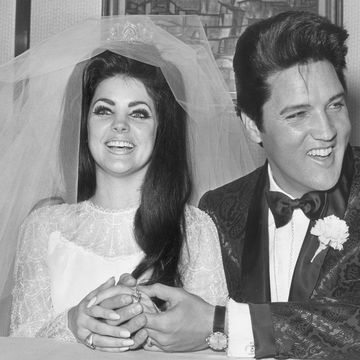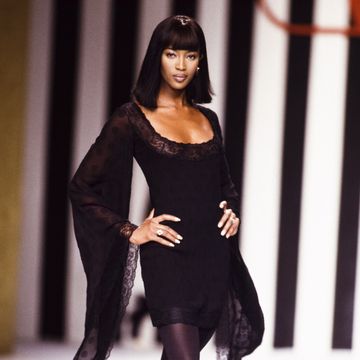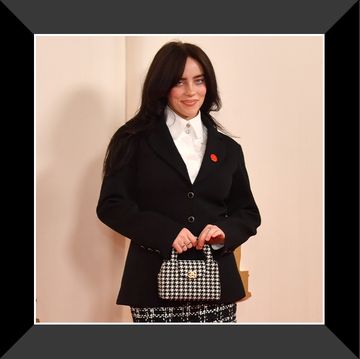(1874-1926)
Who Was Harry Houdini?
Fascinated with magic from a young age, Harry Houdini began performing and drew attention for his daring feats of escape. In 1893, he married Wilhelmina Rahner, who became his onstage partner as well. Houdini continued performing escape acts until his death, on October 31, 1926, in Detroit, Michigan.
Early Life
Houdini was born Erich Weisz on March 24, 1874, in Budapest, Hungary. One of seven children born to a Jewish rabbi and his wife, Weisz moved with his family as a child to Appleton, Wisconsin, where he later claimed he was born. When he was 13, Weisz moved with his father to New York City, taking on odd jobs and living in a boarding house before the rest of the family joined them. It was there that he became interested in trapeze arts.
In 1894, Weisz launched his career as a professional magician and renamed himself Harry Houdini, the first name being a derivative of his childhood nickname, "Ehrie," and the last an homage to the great French magician Jean Eugène Robert-Houdin. (Although he later wrote The Unmasking of Robert-Houdin, a study that set out to debunk Houdin’s skill.) Though his magic met with little success, he soon drew attention for his feats of escape using handcuffs. In 1893, he married fellow performer Wilhelmina Beatrice Rahner, who would serve as Houdini's lifelong stage assistant under the name Beatrice "Bess" Houdini.
Commercial Success
In 1899, Houdini's act caught the attention of Martin Beck, an entertainment manager who soon got him booked at some of the best vaudeville venues in the country, followed by a tour of Europe. Houdini's feats would involve the local police, who would strip search him, place him in shackles and lock him in their jails. The show was a huge sensation, and he soon became the highest-paid performer in American vaudeville.
Houdini continued his act in the United States in the early 1900s, constantly upping the ante from handcuffs and straightjackets to locked, water-filled tanks and nailed packing crates. He was able to escape because of both his uncanny strength and his equally uncanny ability to pick locks. In 1912, his act reached its pinnacle, the Chinese Water Torture Cell, which would be the hallmark of his career. In it, Houdini was suspended by his feet and lowered upside-down in a locked glass cabinet filled with water, requiring him to hold his breath for more than three minutes to escape. The performance was so daring and such a crowd-pleaser that it remained in his act until his death in 1926.
Exploits Outside of Magic
Houdini's wealth allowed him to indulge in other passions, such as aviation and film. He purchased his first plane in 1909 and set out to become the first person to man a controlled power flight over Australia in 1910. While he did it after a few failed attempts, it later was revealed that Houdini was likely beaten to the punch by just a few months by a Capt. Colin Defries, who made a short flight in December 1909.
Houdini also launched a movie career, releasing his first film in 1901, Merveilleux Exploits du Célébre Houdini Paris, which documented his escapes. He starred in several subsequent films, including The Master Mystery, The Grim Game and Terror Island. In New York, he started his own production company, Houdini Picture Corporation, and a film lab called The Film Development Corporation, but neither was a success. In 1923, Houdini became president of Martinka & Co., America's oldest magic company.
Houdini's publishing career didn't end with his literary takedown of Jean Eugène Robert-Houdin, either, as he later wrote Miracle Mongers and Their Methods (1920) and A Magician Among the Spirits (1924).
As president of the Society of American Magicians, Houdini was a vigorous campaigner against fraudulent psychic mediums. Most notably, he debunked renowned medium Mina Crandon, better known as Margery. This act turned him against former friend Sir Arthur Conan Doyle, who believed deeply in spiritualism and Margery's sight. Despite his activism against spiritual charlatanism, Houdini and his wife did in fact experiment with otherworldly spiritualism when they decided that the first of them to die would try to communicate from beyond the grave with the survivor. Before her 1943 death, Bess Houdini declared the experiment a failure.
Harry Houdini Death
Though there are mixed reports as to the cause of Houdini's death, it is certain that he suffered from acute appendicitis. Whether his demise was caused by a McGill University student who was testing his will by punching him in the stomach (with permission) or by poison from a band of angry Spiritualists is unknown. What is known is that he died of peritonitis from a ruptured appendix on October 31, 1926, at the age of 52, in Detroit, Michigan.
After his death, Houdini's props and effects were used by his brother Theodore Hardeen, who eventually sold them to the magician and collector Sidney H. Radner. Much of the collection could be seen at the Houdini Museum in Appleton, Wisconsin, until Radner auctioned it off in 2004. Most of the prized pieces, including the Water Torture Cell, went to magician David Copperfield.
QUICK FACTS
- Name: Harry Houdini
- Birth Year: 1874
- Birth date: March 24, 1874
- Birth City: Budapest
- Birth Country: Hungary
- Gender: Male
- Best Known For: Harry Houdini's grand illusions and daring, spectacular escape acts made him one of the most famous magicians of all time.
- Astrological Sign: Aries
- Nacionalities
- Hungarian
- Death Year: 1926
- Death date: October 31, 1926
- Death State: Michigan
- Death City: Detroit
- Death Country: United States
Fact Check
We strive for accuracy and fairness.If you see something that doesn't look right,contact us!
CITATION INFORMATION
- Article Title: Harry Houdini Biography
- Author: Biography.com Editors
- Website Name: The Biography.com website
- Url: https://www.biography.com/celebrities/harry-houdini
- Access Date:
- Publisher: A&E; Television Networks
- Last Updated: April 15, 2021
- Original Published Date: April 3, 2014
QUOTES
- I am a great admirer of mystery and magic. Look at this life—all mystery and magic.
- No performer should attempt to bite off red-hot iron unless he has a good set of teeth.
- Look at love. How could we ever keep love a-burning day after day if it wasn't that we, and they, surrounded it with magic tricks...












